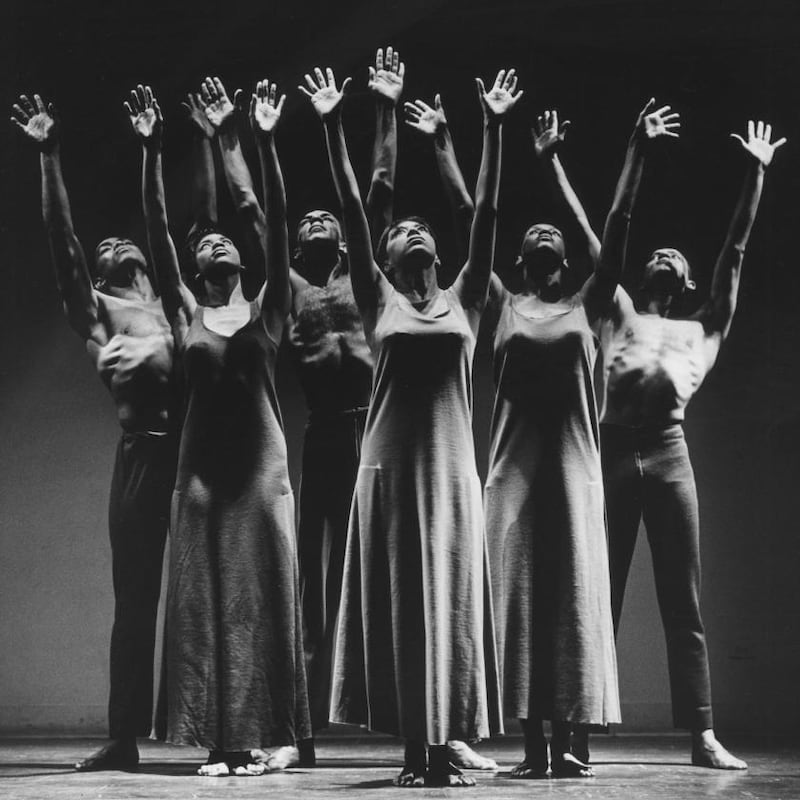Ailey, a new documentary from Town Hall director Jamila Wignot, opens with footage of the late Cicely Tyson introducing the pioneering choreographer Alvin Ailey as the “pied piper of modern dance” at the Kennedy Centre Honours.
The work of the renowned African-American dancer and choreographer is – over the course of this compelling new film – compared with a train that changes the very geography around it as it moves through space. Or, as Tyson put it: “Alvin Ailey has a passion for movement that reveals the meaning of things. His is a choreography of the heart.”

“From the moment in time that he arrives into the modern dance scene, he created these dance works that are very much rooted in the abstract forms, and lines that are so much a part of that tradition but that also have an incredible theatrical quality and a real narrative sense,” says Wignot. “He’s channelled his own life experiences and his ethnic backgrounds and spirituals into modern dance. But there’s an accessibility and a joy that’s a part of his work. I think that’s why people gravitate toward him.
“He created a repertory company because he was not only interested in staging his own works. He was using his own company as a Trojan horse. He gets you in the doors but you’re actually going to see something very different than what you came for. He’d bring in a dance-maker who comes out of a very different tradition – someone like Bill T Jones – and that gave the dancers a whole new language of dance to work with, and audiences access to something that they maybe wouldn’t have seen otherwise. He was a dance evangelist in a way that I think other modern dance choreographers weren’t.”
What was really amazing was this notion of blood memories, which was Mr Ailey's idea of a kind of ancestral memory... that he feels informs his southern black experience
Wignot is neither a choreographer nor a dance historian, but while attending Wellesley College on a scholarship, she received tickets from a black student group to see Ailey’s company – the Alvin Ailey American Dance Theatre Company – where he pioneered a fusion of ballet, jazz and African-American dance. The performances stayed with her. Two decades later, by a remarkable coincidence, the film-maker was approached by Insignia Productions and PBS to direct a biographical documentary.
“I had enough luck to discover him,” she says. “The dance piece I remember most is Revelations. It stuck with me and I continued to see the company perform. Over the years, I had friends who danced for the company. So when the opportunity found me to make make the film, it was extraordinary. I wasn’t aware that there hadn’t really been a biographical portrait of him before now.”
Ailey’s career was hardly an obvious path. Born in Texas, in 1931, Ailey’s early life was framed by the Great Depression and Jim Crow laws. He never knew his father, but throughout his life remained close to his God-fearing, single mother, Lula Elizabeth. Aged four, he began picking cotton. “I was miserable then and felt very alone,” Ailey said of his childhood. But he found some joy and refuge in honky-tonks and in church.
The hardship of his life is offset by his poetic use of language in tapes that were recorded in the process of writing an autobiography Ailey co-authored with Peter Bailey. These invaluable audio cassettes, discovered at the company by the film-makers in the process of researching the documentary, were recorded in the last year of his life. They prove a remarkable resource. An early sexual encounter with another boy is told in a fashion that is as exquisite and expressive as his choreography. Every memory is vividly recounted.
“I remember being glued to my mother’s hip, sloshing through the terrain, branches, slashing against a child’s body,” recalls Ailey. “I remember the sunsets. I remember people moving in the twilight.”

When Ailey turned 11, his mother moved to Los Angeles, California, in search of work. In California Ailey quickly became interested in poetry, music and the performances of the Ballets Russes, and especially the African-American ballerina, Katherine Dunham. At 18, he began training with choreographer Lester Horton. Within 10 years, he had relocated to New York and founded his own company, where Revelations, Ailey’s church-inspired, African-American spiritual, became the signature dance work and an instant American classic.
“Technically demanding, choreographically sound and aesthetically magnificent, Revelations is the dance version of Rodin’s The Thinker, or Leonardo da Vinci’s Mona Lisa,” wrote dance critic Lauren Warnecke in the Los Angeles Times in 2017; “It’s the closest we get in dance to a permanent exhibit.”
Integral to Revelations is Ailey’s concept of “blood memory”, an idea that continues to inform such contemporary Ailey Company choreographers as Lorenzo “Rennie” Harris.
“What was really amazing was this notion of blood memories, which was Mr Ailey’s idea of a kind of ancestral memory, that he was drawing upon and that he feels informs all of his southern black experience,” says Wignot. “And that is something that became very meaningful for Rennie. And for us, it also became this kind of liberating point.
“What we always wanted was for you to feel, not like you were in a film watching Ailey live his life, but that you were in his body, experiencing his discoveries and experiencing his journey. And so to have this idea of ancestral memory opened up for us the possibility of sourcing images of the black experience from many decades, actually, as a way of accessing ancestral memory, and seeing what it means to move from the south to being in New York, to being a dancer, to being a queer person.”
There's a real interest in trying to dissect how a person arrives at the sort of psychological space that they're at. Was it his absent father? Was it his poor background? Was it his mother? Was it his sexuality?
Archival producer Rebecca Kent and editor Annukka Lilja produce impeccably spliced rare performances from the archives, footage that creates the excitement of the live work. Original Ailey company members, Carmen de Lavallade and Judith Jamison, are joined by company alumni and all make for spirited company. For all the sensual plié and arabesque and sensational new content, Ailey remains a profoundly sad film.
Ailey was uncomfortable with the term “black choreographer”. He never publicised his sexuality or seemed to make meaningful romantic connections with anyone. Only one boyfriend is mentioned in the course of the film, a young Parisian named Abdullah who followed Ailey to New York, only to run off without saying goodbye. Ailey was secretive about the nervous breakdown he suffered in the early 1980s.
When he died in 1989 from an Aids-related illness, he asked his doctor to announce that his death was caused by terminal blood dyscrasia in order to shield his mother from the truth. The footage that opens the film from the Kennedy Centre Honours reappears in the film to include spectators Ronald and Nancy Reagan. The president and first lady, who were infamously slow to respond to the Aids crisis, smile as Ailey receives his honour.
“One’s gift, one’s genius, separates oneself from one’s colleagues,” suggests Bill T Jones, another ground-breaking black, gay choreographer and former Ailey collaborator.
“It wasn’t easy,” says Wignot. “I think we arrived at a place of allowing viewers to kind of feel the intensely private aspects of his life. It is what forever makes him elusive. And I think there’s a real interest in trying to dissect how a person arrives at the sort of psychological space that they’re at. Was it his absent father? Was it his poor background? Was it his mother? Was it his sexuality?
“You meet a boy who is raised by a single mother in a specific time, you know, 1931, Jim Crow south, who also has his sort of sexual awakening. And from that point on, you should be seeing the story that unfolds as the story of a queer black man, who’s navigating life. He’s coming into his adulthood in 1958. There is no public sexual identity as we think about it today.
“Merce Cunningham, Paul Taylor, Alvin Ailey – there are several modern dance choreographers of his generation, who also were all queer, but are not men who are sort of stepping forward with that identity. Ailey wasn’t in the closet within the company, but he was such a private person. It doesn’t have to do with Alvin Ailey, like, as a gay man. It has to do with Alvin Ailey as a human being who is not capable of creating intimate relationships.
“A moment of surprise and sadness for me was listening to Masazumi Chaya, this is Ailey’s artistic director, and hearing him say: ‘I only went into his apartment one time, he only invited me one time, and I didn’t want to go in.’ For all that he created, he remains a question and an absence.”
Ailey opens on January 7th




















